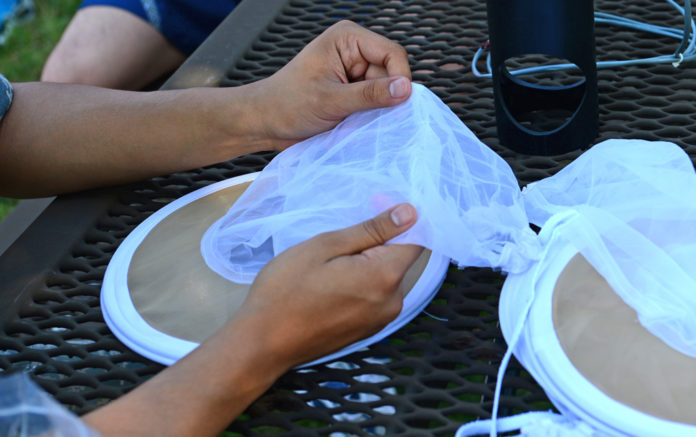Scientists devise traps that can help in measuring mosquitoes and understanding malaria transmission
Tigers are often trapped during hunts for maneaters. Can mosquitoes be trapped too?
The answer, fascinatingly, is yes. So much so that these traps could become an effective way of mosquito control.
Host decoy traps mimic humans or cattle by combining odour, heat and a conspicuous visual stimulus. A new study shows that they could be an efficient option for controlling outdoor-biting mosquitoes in malaria endemic regions. The study was published in the open access journal Parasites & Vectors.
Natural host odours are added by placing either a human volunteer or a cow inside a ventilated tent and venting the odour from the tent around the trap using a ventilator
While indoor-biting mosquitoes, which are important vectors for malaria, are being controlled through the use of long lasting insecticidal nets and indoor spraying, additional strategies are needed to effectively control outdoor-biting mosquitoes. To achieve this, effective monitoring of outdoor-biting mosquitoes is key.
India has a huge malaria burden. According to figures available with the National Vector Borne Disease Control Programme, till August 2018 218220 cases of malaria were reported in the country and 23 people succumbed to the disease. This could however be just the tip of the iceberg. The World Malaria Report 2017 says: “Countries with weak malaria surveillance systems include India and Nigeria, two major contributors to the global burden of malaria, with 8 per cent and 16 per cent of cases, respectively, detected by the surveillance system.”
Bernard Abong’o, PhD student at Liverpool School of Tropical Medicine, based at Kenya Medical Research Institute and the corresponding author of the study said: “In regions with high bed net coverage like western Kenya, mosquitoes are likely to rest and bite outdoors since bed nets prevent them from feeding indoors. With increased outdoor biting and resting of mosquitoes, it becomes extremely difficult to collect and study the vectors due to their wide dispersal in the outdoor environment. However, monitoring of outdoor-biting mosquito populations is important in understanding mosquito species composition, densities and more importantly malaria transmission in regions with high bed net coverage.”
The researchers compared three different mosquito collection methods: Human landing catch – the current gold standard which relies on collection of mosquitoes which land on human volunteers – and host decoy traps baited either with human or cattle odour.
The traps combine a container filled with hot water (the heat stimulus, equivalent to human body temperature) which is placed in a bucket with a black fabric jacket tied around it (the visual stimulus, which provides a conspicuous dark contrast against the surrounding environment).
Natural host odours are added by placing either a human volunteer or a cow inside a ventilated tent and venting the odour from the tent around the trap using a ventilator and a tube. Mosquitoes are expected to follow first the odour cues emanating from the tube and subsequently react to the visual and heat stimuli of the trap, landing on its adhesive surface where they can be collected.
Abong’o said: “The high numbers of An. arabiensis we collected in cow odour-baited traps suggest the existence of a large population of these malaria vectors outdoors, and that they are sustained by cow blood. The fact that we caught An. arabiensis both in human and cattle-baited traps illustrates the diversity of feeding behaviour in this species which may make it difficult to sample and control by established methods.”
